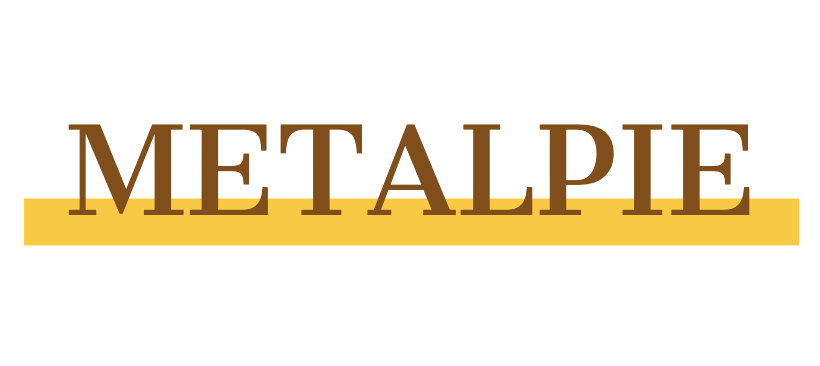What is sheet metal fabrication?
Talking about sheet metal fabrication, the first word that can help you get an idea of it is paper-craft. Cutting, folding, and gluing the pieces of paper to form a new shape.
Sheet metal fabrication starts by turning metal into thin, flat sheets. Various manufacturing techniques shape the sheet metal. This article categorizes these techniques into cutting, forming, assembly, and surface treatment.
Common metals for sheet metal fabrication include copper, aluminum, stainless steel, and zinc. We call the thickness of sheet metal gauge. It ranges from 3 gauge, which is 0.2391 inches to 36 (0.0067in.) gauge. The greater the gauge number, the thinner the steel metal.
Many areas use sheet metal fabrication.
Manufacturers use it in:
Consumer goods
Cars
HVAC (Heating, Ventilation, and Air Conditioning)
Aerospace
Forming
Forming in sheet metal fabrication is like folding paper for crafts. However, it uses advanced and complex techniques.
Forming in sheet metal fabrication changes the metal into shapes. It does this without cutting the material. The main forming processes are bending, stamping, and spinning.
Sheet metal bending uses a press brake, which is a tool in the metal fabrication industry. It bends sheet metal into useful shapes. U-shape and V-shape bending are the standard bendings. The bending angle typically ranges from 0 to 120 degrees. This depends on what the customer requests. With advanced technology for bending, we can now input data into the robotic arm. It operates automatically.
working robotic arm
Stamping is also known as pressing. This method uses tremendous force to push the sheet metal on a die surface. The sheet metal is deformed and forms a new shape.
Spinning is a less common forming method in the sheet metal fabrication industry. It turns a circular piece of sheet metal into a cylindrical or axial rounded shape. A spinning machine pushes a force sideways against the circular metal sheet quickly. The roller of the spinning machine supports the rounded sheet metal and gives it the final shape. Spinning is mainly to create round shapes like cylinders and cones.
Assembly
This is the last step in sheet metal fabrication. It connects the pieces made in earlier steps, unless no surface treatment is needed. The two commonly used techniques for assembly are pressing rivet fasteners and welding.
Pressing rivet:
Just as its name implies, this is the process of pressing the rivet with a downward force into the thin sheet metal. This lets you form riveting nuts. Then, use bolts to fasten the sheet metal pieces by joining the nuts and bolts.
pressed rivet
Welding:
Welding is a common way to join sheet metal products. Once the metal pieces are formed, the pieces can be joined together with welding. Thus, the metals are fused to form a solid connection. In essence, welding is a process that melts sheet metals. Welding of common sheet metals for stainless steel and aluminum is particularly doable. Welding methods would vary depending on the types of metals. MIG (Metal Inert Gas) welding and TIG (Tungsten Inert Gas) welding are two types of welding.
welding operation
Surface treatment
This is the ultimate process in sheet metal fabrication. After they cut and shape the metal pieces, they use different methods to finish them. The three main methods for surface treatment are anodizing, powder coating, and electroplating. The surface treatment boosts corrosion resistance. It can also alter the metal’s texture and colors.
Anodizing is a surface treatment method for aluminum sheet metals. The basic principle of it is forming a layer of Al2O3 on the surface of the metal by anodized oxidation. This layer enhances the resistance of corrosion and the hardness of the metal. However, anodizing is only doable for aluminum sheet metals. Anodizing is often used for precision instruments, aerospace items, and automotive parts.
Powder coating is a method that applies dry powders to protect sheet metal surfaces. It is more suitable for metals like stainless steel, steel, and aluminum than anodizing is.
on going powder coating
Electroplating creates a coat or cover through electrodeposition. It changes cathodes into anodes. This process enables the sheet metal to become more smooth and more good-looking.
Types of sheet metal:
Steel is affordable. It’s often used for furniture, cabinets, and big structures, like garage gates.
Stainless steel resists corrosion well. It’s often used in kitchen tools, lab equipment, and HVAC pipes.
Aluminum is less common because it is more expensive than other metals. It still resists corrosion well. It’s lighter and stronger. This makes it perfect for smartphones, computers, and car parts.
Conclusion
Bingo! After these four main processes, an initially flat sheet metal turns into a workable part. Cutting, forming, assembly, and finalizing it with surface treatment. Sheet metal fabrication is flexible and versatile. Various industries have the demand for sheet metal. Aluminum sheet metal is widely used in the automotive and aerospace industries. This is because of its unique properties. Sheet metal fabrication is crucial to utilize aluminum in a specific shape. Sheet metal fabrication is also significantly important for the HVAC industry. Metals are needed to create the tubes for transferring heat, fresh air, and humidity. Knowing the processes and techniques (cutting, forming, assembly, and surface treatment) is necessary. Knowing these processes helps you choose your custom part design.
